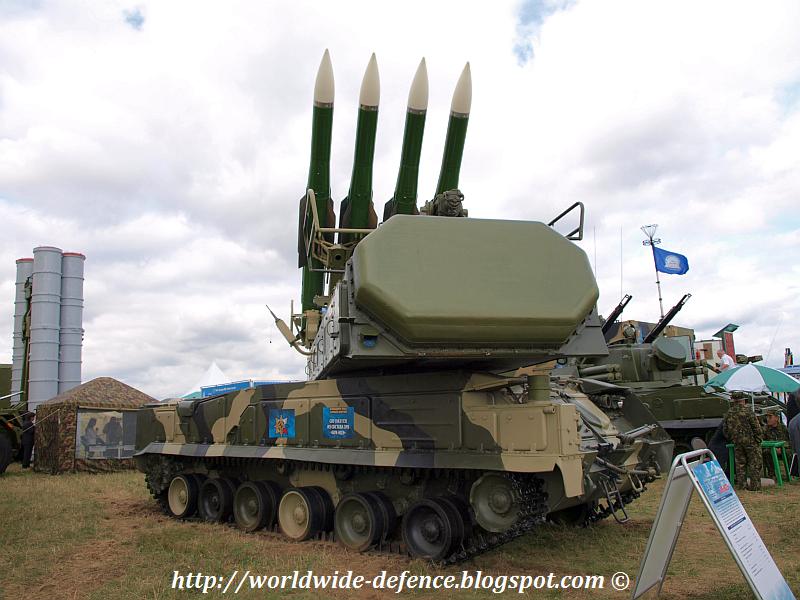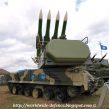
The Generational Crisis In Russia’s Defense Industry
Publication: Eurasia Daily Monitor Volume: 8 Issue: 100
By:

The Russian State Arms Program [Gosudarstvennaya Programma Vooruzheniya–GPV] to 2020 sets as its primary goal achieving 70 percent new weapons and equipment in the military inventory. This target appears increasingly unrealistic. On May 10, President Dmitry Medvedev berated senior officials for glacial progress in implementing state arms orders, demanding to know why objectives were not met. The Federal Agency for Special Construction, Spetsstroy, also experienced unprecedented cadre changes. High profile sackings commenced on April 22 with its Director Nikolay Abroskin and culminated on May 16 with President Medvedev dismissing five generals from Spetsstroy (Vedomosti, April 25; www.kremlin.ru, May 10, 16). On April 21, Defense Minister Anatoliy Serdyukov ordered the creation of a new Council on Scientific and Technical Policy (SNTP), acting as a defense ministry consultative body to promote innovation in military and dual-use technologies. Duma deputy and former First Deputy Defense Minister Andrei Kokoshin was appointed the SNTP’s chairman (EDM, May 17).
Cadre changes, scolding senior officials and forming additional support structures signal efforts to identify and tackle much deeper underlying problems within Russia’s defense industry. In Nezavisimoye Voyennoye Obozreniye, Viktor Myasnikov examined the manifold problems facing Russian engineers within the defense industry. Myasnikov stressed that the defense industry is in the midst of a systemic crisis, due to its inefficient management, burgeoning corruption, years of low funding and obsolete machine tools, among other issues. Machine tools are up to 90 percent obsolete, but total re-equipping is not necessarily the only answer. “It is necessary to change the thinking of plant management so production problems are solved systemically at least at the level of modern technology if not innovation, which is harder to grasp,” Myasnikov asserted (https://nvo.ng.ru/armament/2011-05-13/8_enginering.html, May 13).
Soviet-legacy inefficiencies saddle the defense industry with high manufacturing costs, wastage of raw material and dated views on labor productivity. Machine tool operators spend no more than 70 percent of their time in machining a component at a lathe; the remainder of their time involves devising work schedules and other duties. According to the Ministry of Economic Development and Trade in 2008, Russia is 30 times inferior to the US and EU in terms of labor productivity. Myasnikov noted that the Russian shipbuilding industry requires three times longer per one built ton than the shipbuilding industry in South Korea, which leads the way since it builds ships faster and more cheaply than others. These inefficiencies explain why it takes Russia five to seven years instead of two years to build corvettes and frigates for the Navy (https://nvo.ng.ru/armament/2011-05-13/8_enginering.html, May 13).
Almaz-Antey PVO Concern, consisting of 60 enterprises in 18 regions, is the successful manufacturer of S-300, S-400, Buk and Tor air defense systems. Almaz-Antey’s Director-General, Vladislav Menshchikov, addressing a meeting of junior specialists in April stated: “The concern’s development could exhaust itself by 2015 within the framework of the existing technological structure. In light of Russian enterprises’ significant lag in labor productivity compared to the global average, a scenario of evolutionary development results in a loss of competitiveness, and that is unacceptable.” Menshchikov emphasized that the departure of skilled cadres from defense industry enterprises has worsened during the past twenty years. Consequently, eminent specialists must be surrounded by junior specialists who will “inherit their experience in joint work on the accomplishment of specific tasks” (Nezavisimoye Voyennoye Obozreniye, April 29).
Dmitriy Vlasov, a primary specialist in the Moscow Scientific Research Institute of Instrument Automation (MNIIPA), complained: “The scientific schools have nearly completely disappeared. Really, the foundation of hi-tech production, which is the production of state-of-the-art weapons, is the thorough scientific elaboration of all of those things, which are later used in them. And in order to be involved with that in a skillful manner, people are needed who have rich experience in this matter.” However, Vlasov’s scientific leader is almost 70 years old and the leading software engineer in the same institute is a similar age. That generation gap is causing deep anxiety within the defense industry (Nezavisimoye Voyennoye Obozreniye, April 29).
Some progress is visible, however, especially in relation to raising salaries. Specialists working in Almaz-Antey earn an average of 27,412 rubles per month ($976.30), and taking account of additional incentives, many are earning in excess of 35,000 rubles monthly ($1,246.56). This is gradually improving the average age of the workforce: the average age of the specialist-developers and scientific-technical workers declined from 50 in 2006 to 47 in 2010. Associates under the age of 40 have reached 32 percent, of which 18 percent are under 30 (Nezavisimoye Voyennoye Obozreniye, April 29). Nonetheless, this does not promise rapid restoration of the capacity of the defense industry to meet the targets set by the GPV.
Indeed, Myasnikov explained that in the views of directors of successful enterprises in the defense industry, re-equipping the machine tool infrastructure is not simply a matter of increasing spending or reversing the fortunes of a largely bankrupt lathe building industry. Such directors also acknowledge that these issues cannot be solved by buying abroad. The key challenge is to “develop a scheme for the technological re-equipping of every enterprise to perform specific production tasks and produce certain products. And the main role here belongs to engineering.” Successful engineering corporations such as the Finval group can design and develop a new production facility on an existing site within a short timetable and achieve their targets; they do not require government support. “The only thing that is necessary is not to impede them. And directors who think appropriately and are concerned for the prosperity of their enterprises will easily find a common language with them. Because they both have the same objective—creating a modern competitive and highly efficient production facility that makes a profit (https://nvo.ng.ru/armament/2011-05-13/8_enginering.html, May 13).
On May 20, outlining the work of the SNTP, Kokoshin talked about looking “beyond the GPV” and concentrating on much longer term projects. Kokoshin implied that the defense industry will be unable to meet many of the challenges set by the existing GPV, and that modernization, including the introduction of high-tech systems, may have to wait until the next decade (Nezavisimoye Voyennoye Obozreniye, May 20). Given the depth of the existing problems in the defense industry and the absence of obvious solutions, it seems that modernization will be scaled back and only make progress over a much longer timescale.




